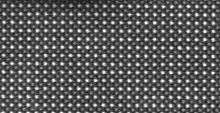Annular dark-field imaging
Annular dark-field imaging is a method of mapping samples in a scanning transmission electron microscope (STEM). These images are formed by collecting scattered electrons with an annular dark-field detector.
In conventional dark-field imaging (in a parallel beam mode, not STEM), an objective aperture is placed in the diffraction plane so as to only collect electrons scattering through that aperture, avoiding the main beam. By contrast, in STEM mode the optics distinguishing between dark and bright field modes is positioned further downstream, after the converged beam has interacted with the specimen. Consequently, the contrast mechanisms are different between conventional dark field imaging and STEM dark field.

An annular dark field detector collects electrons from an annulus around the beam, sampling far more scattered electrons than can pass through an objective aperture. This gives an advantage in terms of signal collection efficiency and allows the main beam to pass to an electron energy loss spectroscopy (EELS) detector, allowing both types of measurement to be performed simultaneously. Annular dark field imaging is also commonly performed in parallel with energy-dispersive X-ray spectroscopy acquisition and can be also done in parallel to bright-field (STEM) imaging.
An annular dark field image formed only by very high angle, incoherently scattered electrons (Rutherford scattered from the nucleus of the atoms) — as opposed to Bragg scattered electrons — is highly sensitive to variations in the atomic number of atoms in the sample (Z-contrast images). This technique is also known as high-angle annular dark-field imaging (HAADF).[1]
See also
References
- ↑ DE Jesson; SJ Pennycook (1995). "Incoherent Imaging of Crystals Using Thermally Scattered Electrons". Proc. Roy. Soc. A. 449: 273. Bibcode:1995RSPSA.449..273J. doi:10.1098/rspa.1995.0044.